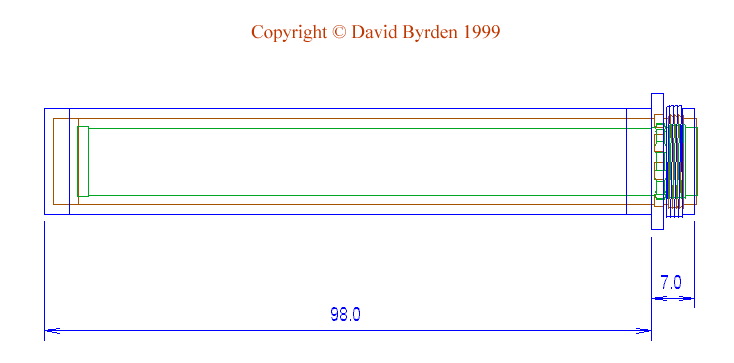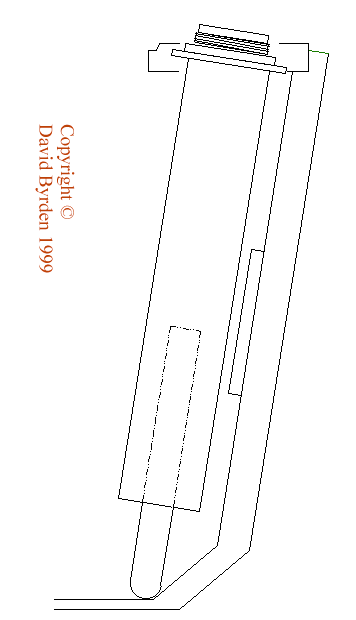About this detail of the Tiger
Early Tigers had the capability to travel underwater after half an hour's preparation. To provide air to the vehicle, a sectioned snorkel was stowed inside the tail. Most pieces of the snorkel for the Tiger #250122, in the museum at Bovington, seem to have been lost; when I visited I was able to find only the top piece.
Here is the top section of the snorkel for the Bovington museum's Tiger. It was painted, as far as I can tell, in red primer. It is exactly one meter long and most of it is 110mm in diameter.

The next section of the snorkel was slightly longer thanks to having screw threads at the end. It was, as far as I can tell from photos, 140mm in diameter, and the third section was 170mm in diameter. Here is a diagram representing all three pieces stowed within each other like Matryoshka dolls. I have no way of knowing whether the smaller pieces protruded at the end, so this diagram is only a guess.

In the above diagram, the dimensions of the longest piece are only approximations. Notice that it has a flange at the end.
There was also a fourth section of the snorkel, of diameter 200mm and length about 108mm, but this piece was permanently fixed inside the engine compartment by 8 bolts in a flange at its end. The other sections fit neatly inside it, and it meets a 75mm air inlet tube running up from the floor of the vehicle. The most likely colour for this section would be the same as the rest of the engine room.
Here is a diagram showing the approximate position of this fixed piece. The other pieces are stowed in it and at the top you can see the end of the third section, which is held in place by its flange. I am just guessing about the exact appearance of this end of the 3rd snorkel piece; I can find no photographs.


You can see the stowage tube in this diagram from Tigerfibel. It also shows how the air from the tube went into an air duct on the hull floor.
Finally, here is a diagram of the snorkel assembled. The rectangular box shape between the snorkel and the rear hull plate, is a conduit that leads hot air into the fans. You can see it represented in the Tigerfibel diagram.

[1] Survey of Tiger 250122, at Bovington museum, by David Byrden